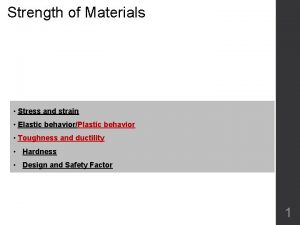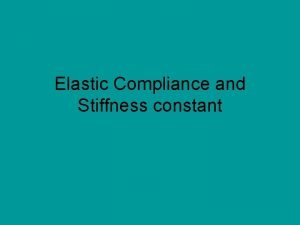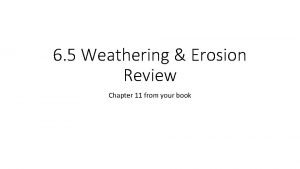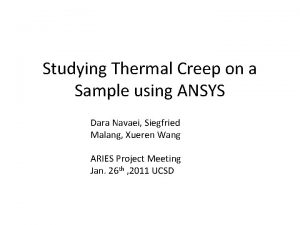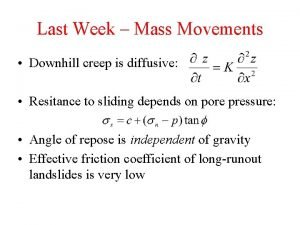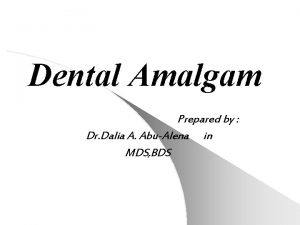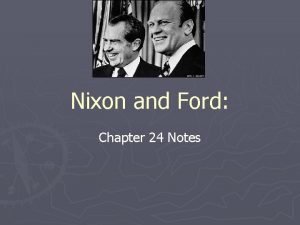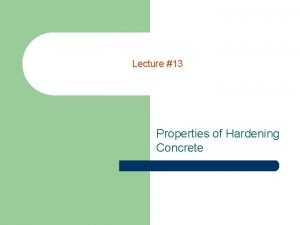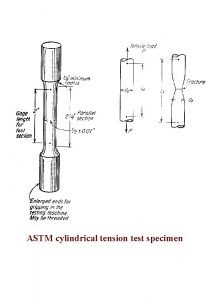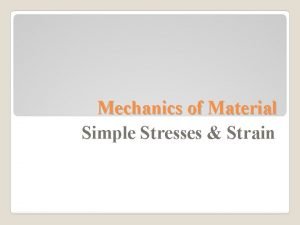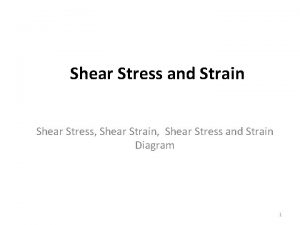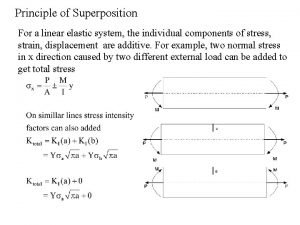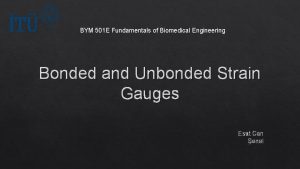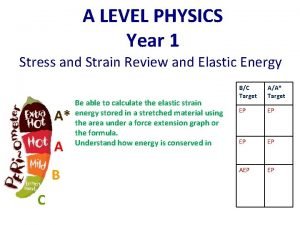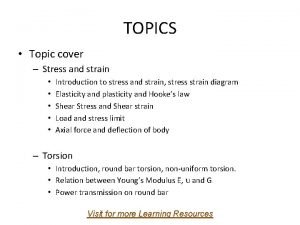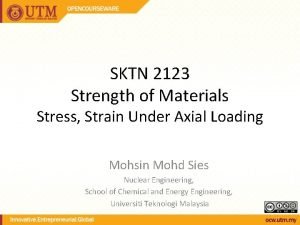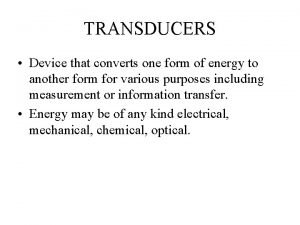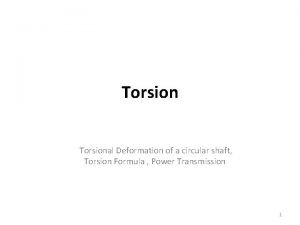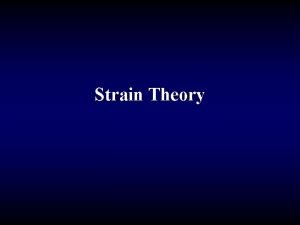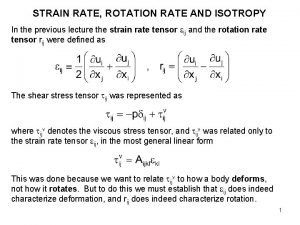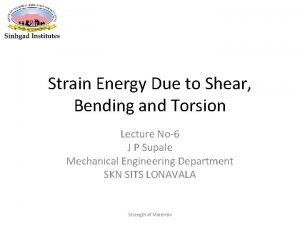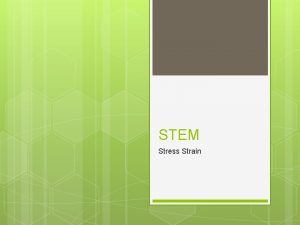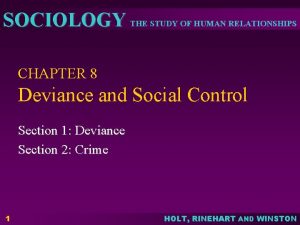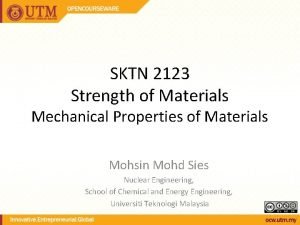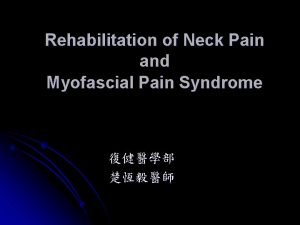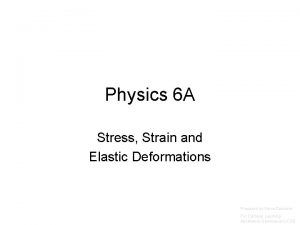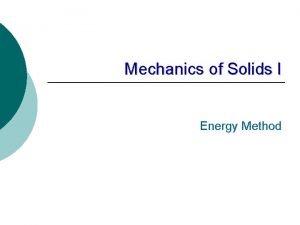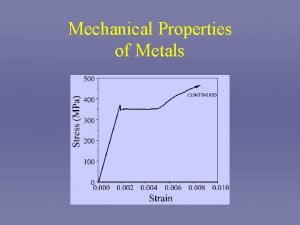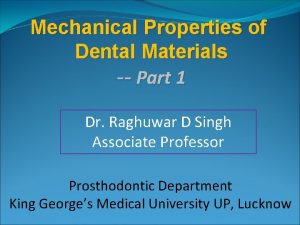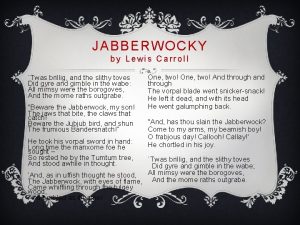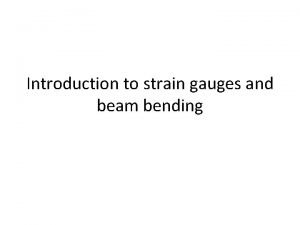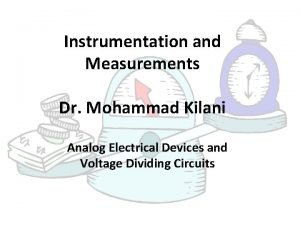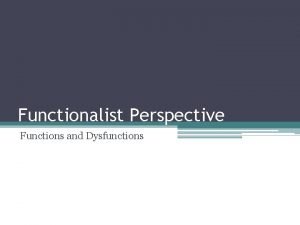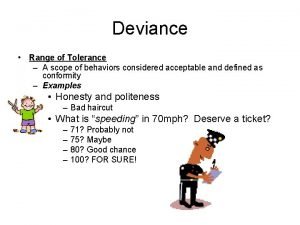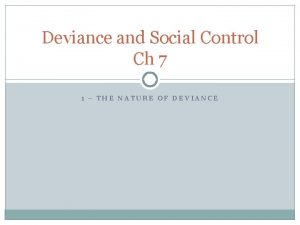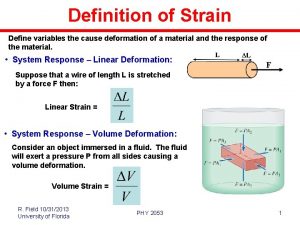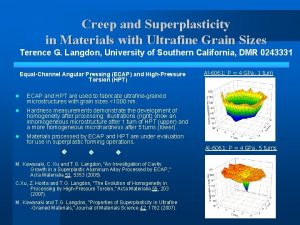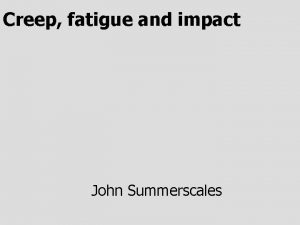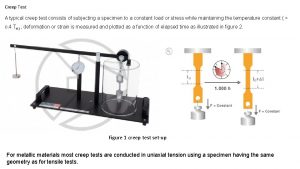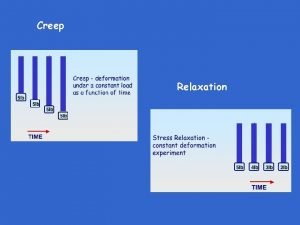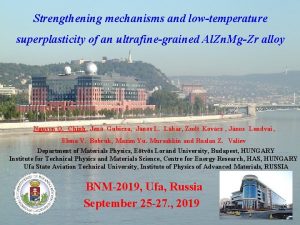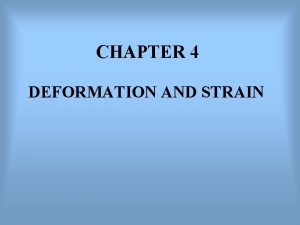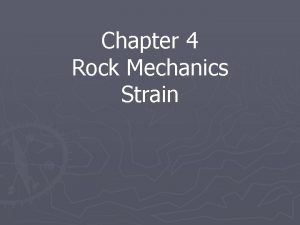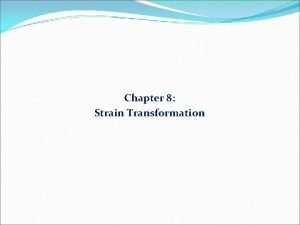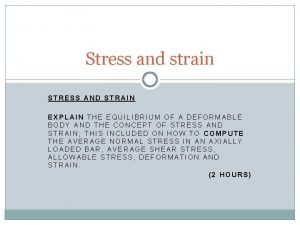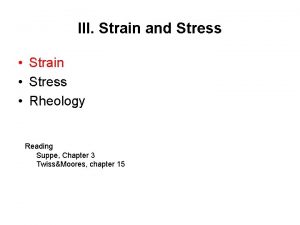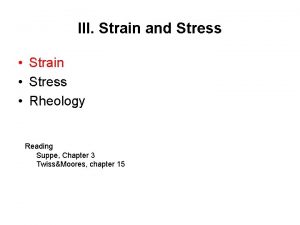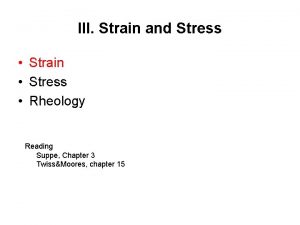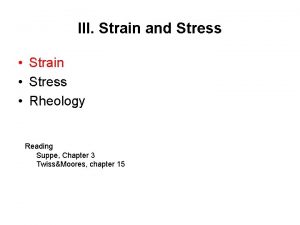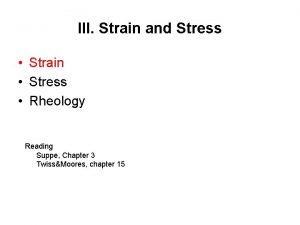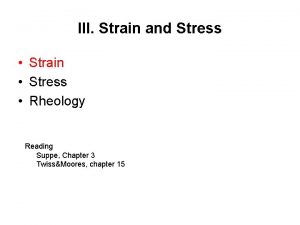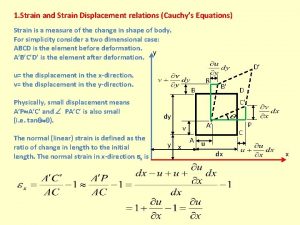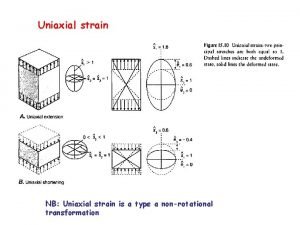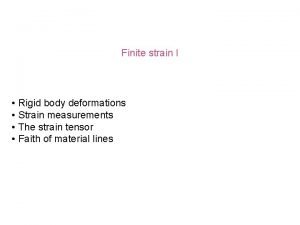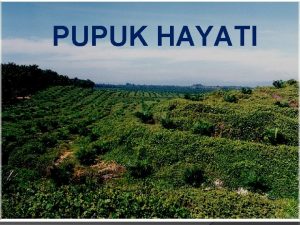Chapter 13 Creep and Superplasticity Creep Strain vs














































- Slides: 46

Chapter 13 Creep and Superplasticity

Creep Strain vs. Time: Constant Temperature

Creep Strain vs. Time at Constant Engineering Stress

Creep Machine Initial position Length of specimen has increased from L 0 to L 1. Creep machine with variable lever arms to ensure constant stress on specimen; note that l 2 decreases as the length of the specimen increases.

Mukherjee-Bird-Dorn Equation

Larson-Miller Equation Relationship between time to rupture and temperature at three levels of engineering stress, σa, σb, and σc, using Larson–Miller equation (σa > σb > σc).

Larson-Miller Parameter Master plot for Larson–Miller parameter for S-590 alloy (an Fe-based alloy) (C = 17). (From R. M. Goldhoff, Mater. Design Eng. , 49 (1959) 93. )

Manson-Hafered Parameter Relationship between time rupture and temperature at three levels of stress, σa, σb, and σc, using Manson–Haferd parameter (σa > σb > σc).

Sherby-Dorn Parameter Relationship between time to rupture and temperature at three levels of stress, σa > σb > σc, using Sherby– Dorn parameter.

Material Parameters

Activation Energies for Creep Activation energies for creep (stage II) and self-diffusion for a number of metals. (Adapted with permission from O. D. Sherby and A. K. Miller, J. Eng. Mater. Technol. , 101 (1979) 387. )

Secondary Creep Ratio between activation energy for secondary creep and activation energy for bulk diffusion as a function of temperature. (Adapted with permission from O. D. Sherby and A. K. Miller, J. Eng. Mater. Technol. , 101 (1979) 387. )

Fundamental Creep Mechanism • σ/G < 10^(-4) Diffusion Creep – Nabarro Herring – Coble Creep – Harper Dorn Creep

Diffusion Creep Flow of vacancies according to (a) Nabarro–Herring and (b) Coble mechanisms, resulting in an increase in the length of the specimen.

Dislocation Climb Dislocation climb (a) upwards, under compressive σ22 stresses, and (b) downwards, under tensile σ22 stresses.

Diffusion Creep Different regimes for diffusion creep in alumina; notice that cations (Al 3+) and anions (O 2−) have different diffusion coefficients, leading to different regimes of dominance. (From A. H. Chokshi and T. G. Langdon, Defect and Diffusion Forum, 66– 69 (1989) 1205. )

Power Law Creep Dislocation (Power Law) Creep: 10^(-2) < σ/G < 10^(-4) Power relationship between ˙ε and σ for AISI 316 stainless steel. Adapted with permission from S. N. Monteiro and T. L. da Silveira, Metalurgia-ABM, 35 (1979) 327.

Dislocations Overcoming Obstacles Weertman Mechanism Dislocation overcoming obstacles by climb, according to Weertman theory. (a) Overcoming Cottrell–Lomer locks. (b) Overcoming an obstacle.

Shear Stress and Shear Strain Rate Shear stress vs. shear strain rate in an aluminum (6061) with 30 vol. % Si. C particulate composite in creep. (From K. -T. Park, E. J. Lavernia, and F. A. Mohamed, Acta Met. Mater. , 38 (1990) 2149. )

Dislocation Glide Effect of stress and temperature on deformation substructure developed in AISI 316 stainless steel in middle of stage II. Reprinted with permission from H. -J. Kestenbach, W. Krause, and T. L. da Silveira, Acta Met. , 26 (1978) 661. )

Grain Boundary Sliding (a) Steady-state grain-boundary sliding with diffusional accommodations. (b) Same process as in (a), in an idealized polycrystal; the dashed lines show the flow of vacancies. (Reprinted with permission from R. Raj and M. F. Ashby, Met. Trans. , 2 A (1971) 1113. )

Ashby-Verrall’s Model Grain-boundary sliding assisted by diffusion in Ashby–Verrall’s model. (Reprinted with permission from M. F. Ashby and R. A. Verrall, Acta Met. , 21 (1973) 149. )

Weertman-Ashby Map for Pure Silver Weertman–Ashby map for pure silver, established for a critical strain rate of 10− 8 s− 1; it can be seen how the deformationmechanism fields are affected by the grain size. Adapted with permission from M. F. Ashby, Acta Met. , 20 (1972) 887.

Weertman-Ashby Map for Tungsten Weertman–Ashby map for tungsten, showing constant strain-rate contours. (Reprinted with permission from M. F. Ashby, Acta Met. , 20 (1972) 887. )

Weertman-Ashby Map for Al 2 O 3

Mechanisms of intergranular nucleation . (From W. D. Nix and J. C. Gibeling, in Flow and Fracture at Elevated. Temperatures, ed, R. Raj (Metals Park, Ohio: ASM, 1985). )

Heat-Resistance Materials Transmission electron micrograph of Mar M-200; notice the cuboidal γ precipitates. (Courtesy of L. E. Murr. )

Microstructural Strengthening Mechanism in nickel-based superalloys (Reprinted with from C. T. Sims and W. C. Hagel, eds. , The Superalloys (New York: Wiley, 1972), p. 33. )

Rafting in MAR M-200 monocrystalline superalloy; (a) original configuration of gamma prime precipitates aligned with three orthogonal cube axes; (b) creep deformed at 1253 K for 28 hours along the [010] direction, leading to coarsening of precipitates along loading direction. (From U. Glatzel, “Microstructure and Internal Strains of Undeformed and Creep Deformed Samples of a Nickel-Based Superalloy, ” Habilitation Dissertation, Technische Universit¨at, Berlin, 1994. )

Stress-Rupture (at 1000 hours) vs. Temperature for Heat Resistant Materials Stress versus temperatures curves for rupture in 1, 000 hours for selected nickel-based superalloys. (Reprinted with permission from C. T. Sims and W. C. Hagel, eds. , The Superalloys (New York: Wiley, 1972), p. vii. )

Gas Turbine Cross-section of a gas turbine showing different parts. The temperature of gases in combustion chamber reaches 1500 ◦C.

Turbine Blade (a) Single crystal turbine blade developed for stationary turbine. (Courtesy of U. Glatzel. ) (b) Evolution of maximum temperature in gas turbines; notice the significant improvement made possible by the introduction of thermal barrier coatings (TBCs). (Courtesy of V. Thien, Siemens. )

Creep in Polymers Spring–dashpot analogs (a) in series and (b) in parallel.

Maxwell and Voigt Models (a) Strain–time and (b) stress–time predictions for Maxwell and Voigt models.

Viscoelastic Polymer Strain response as a function of time for a glassy, viscoelastic polymer subjected to a constant stress σ0. Increasing the molecular weight or degree of cross-linking tends to promote secondary bonding between chains and thus make the polymer more creep resistant.

Creep Compliances (a) A series of creep compliances vs. time, both on logarithmic scales, over a range of temperature. (b) The individual plots in (a) can be superposed by horizontal shifting (along the log-time axis) by an amount log a. T, to obtain a master curve corresponding to a reference temperature Tg of the polymer. (c) Shift along the logtime scale to produce a master curve. (Courtesy of W. Knauss. ) (d) “Experimentally” determined shift factor.

Stress Relaxation A constant imposed strain ε 0 results in a drop in stress σ(t) as a function of time.

Effect of Crosslinking on Stress Relaxation A master curve obtained in the case of stress relaxation, showing the variation in the reduced modulus as a function of time. Also shown is the effect of cross-linking and molecular weight.

Electromigration Metal interconnect line covered by passivation layer subjected toelectromigration; (a) overall scheme; (b) voids and cracks produced by thermal mismatch and electromigration; (c) basic scheme used in Nix Arzt equation, which assumes grain-boundary diffusion of vacancies counterbalancing electron wind. (Adapted from W. D. Nix and E. Arzt. Met. Trans. , 23 A (1992) 2007. )

Superplasticity Superplastic tensile deformation in Pb– 62% Sn eutectic alloy tested at 415 K and a strain rate of 1. 33 × 10− 4 s− 1; total strain of 48. 5. (From M. M. I. Ahmed and T. G. Langdon, Met. Trans. A, 8 (1977) 1832. )

Plastic Deformation (a) Schematic representation of plastic deformation in tension with formation and inhibition of necking. (b) Engineering-stress– engineering-strain curves.

Strain Rate Dependence Strain-rate dependence of (a) stress and (b) strain-rate sensitivity for Mg–Al eutectic alloy tested at 350 ◦C (grain size 10 μm). (After D. Lee, Acta. Met. , 17 (1969) 1057. )

Fracture Tensile fracture strain and stress as a function of strain rate for Zr– 22% Al alloy with 2. 5 -μm grain size. (After F. A. Mohamed, M. M. I. Ahmed, and T. G. Langdon, Met. Trans. A, 8 (1977) 933. )

Effect of Strain Rate Sensitivity Effect of strain-rate sensitivity m on maximum tensile elongation for different alloys (Fe, Mg, Pu, Pb–Sr, Ti, Zn, Zr based). (From D. M. R. Taplin, G. L. Dunlop, and T. G. Langdon, Ann. Rev. Mater. Sci. , 9 (1979) 151. )

Cavitation in Superplasticity Cavitation in superplasticity formed 7475 -T 6 aluminum alloy (ε = 3. 5) at 475 ◦C and 5 × 10− 4 s− 1. (a) Atmospheric pressure. (b) Hydrostatic pressure P = 4 MPa. (Courtesy of A. K. Mukherjee. )

Effect of Grain Size on Elongation (a) Effect of grain size on elongation: (A) Initial configuration. (B) Large grains. (C) Fine grains (10 μm) (Reprinted with permission from N. E. Paton, C. H. Hamilton, J. Wert, and M. Mahoney, J. Metal, 34 (1981) No. 8, 21. ) (b) Failure strains increase with superimposed hydrostatic pressure (from 0 to 5. 6 MPa). (Courtesy of A. K. Mukherjee. )
 Mechanical behavior of materials
Mechanical behavior of materials Elastic strain and plastic strain
Elastic strain and plastic strain Toughness on a stress strain curve
Toughness on a stress strain curve Landslides, mudflows, slump, and creep are all examples of
Landslides, mudflows, slump, and creep are all examples of Creep analysis in ansys
Creep analysis in ansys Downhill creep
Downhill creep Dental amalgam classification
Dental amalgam classification Creep committee
Creep committee Regulatory creep
Regulatory creep Creep committee
Creep committee Creep
Creep Cylindrical tensile specimen
Cylindrical tensile specimen Scope creep mitigation
Scope creep mitigation Hooke's law stress and strain
Hooke's law stress and strain Mechanics of material
Mechanics of material Saint venant principle
Saint venant principle Compression physics
Compression physics Principle of superposition in stress and strain
Principle of superposition in stress and strain Unbonded strain gauge
Unbonded strain gauge Merton's strain theory
Merton's strain theory Strain in physics
Strain in physics Stress and strain reading outline
Stress and strain reading outline Saint venant principle
Saint venant principle A device that converts one voltage to another
A device that converts one voltage to another Solve it
Solve it Social strain theory
Social strain theory True strain equation
True strain equation Species vs strain
Species vs strain What is strain theory
What is strain theory Rate of strain tensor
Rate of strain tensor Strain energy due to shear force
Strain energy due to shear force Peardeck/join
Peardeck/join Structural strain theory sociology
Structural strain theory sociology Strain offset method
Strain offset method Cervical strain
Cervical strain A nylon rope used by mountaineers elongates
A nylon rope used by mountaineers elongates Strain energy formula
Strain energy formula Elastic strain recovery
Elastic strain recovery Elastic modulus dental materials
Elastic modulus dental materials Twas brillig
Twas brillig Gauge factor formula
Gauge factor formula Dc current measurement
Dc current measurement Dysfunctions of deviance
Dysfunctions of deviance Deviant definition examples
Deviant definition examples Strain theory examples
Strain theory examples Social strain theory
Social strain theory Strain define
Strain define

